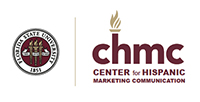Arguments for and against linguistic purity and its implications for marketing to Hispanics in the US.
June 13, 2023

By Stephanie Snopek – Center for Hispanic Marketing Communication, School of Communication at Florida State University
Second to Mexico, the US has the second largest population of Spanish speakers (Tompson, 2021). Due to this extensive mix of cultures, there is a unique melding of languages. This has created many arguments for and against keeping the Spanish language in its separate and pure form, however, using an informal naturally evolved form of the Spanish language can benefit marketers by providing emotional appeals to reach a wider audience and bridge the cultural gap.
The two most important arguments for maintaining linguistic purity, as it pertains to Hispanic speakers, include preserving culture/identity and maintaining communication efficiency. As stated by Lee (2010), language can help maintain cultural identity by serving as the main tool for internalizing heritage and culture. This is done by passing down traditions and shared interests. In addition to that, speaking Spanish preserves culture by giving people a sense of belonging and connectedness to family and other shared values (2021). Language improves communication efficiency by providing a consistent foundation and common ground between all who use the language. This leads to mutual understanding, respect, and shared goals (Thomas & McDonagh, 2012). An example of a common ground use is formal legal documents and research. Both of these examples rely on accurate syntax and grammar, that can not have multiple meanings and connotations. This way there is a mutual understanding of what is being said. Despite these uses, there are also strong arguments opposing linguistic purity.
The opposing view is that language is fluid and should be allowed to evolve naturally. The essential argument for this side is that language can help people adapt and aids in cultural exchange. In particular, studies have shown that first and second-generation bilingual Hispanics who use code-switching and Spanglish often assimilate better into US culture (Bao et. al, 2021). In return, it lowers mental health struggles and anxiety (Toppelberg & Collins 2010). Given the interconnectedness between language and culture, allowing language to naturally evolve promotes a new sense of identity for the New Latino in the US. It gives a sense of belonging to the shared history that they are from different backgrounds. The use of bilingualism has also been shown to enhance cross-cultural behavior (Tsang, 2020).
There are clear arguments for and against maintaining linguistic purity and both arguments are correct. Language is a balance between informal and formal communication; one constantly informs the other and adapts to societal changes. Language in its purest form allows for common ground between all who speak the language. The foundation serves as the basis for informal, niche communication styles that fluctuate. This unique language communication is particularly important for marketing to Hispanic consumers within the US.
As mentioned earlier, understanding when to use informal or formal use of Spanish has great marketing implications. Currently, many advertisements make use of naturally evolved informal language styles such as code-switching, Spanglish, and/or slang phrases. These are important because they use emotional appeals to reach a wider audience and bridge the cultural gap. Given that Hispanic speakers use language as a sense of pride and identity, choosing to use Spanish or mixed language tends to lead to a positive attitude and better recall of a brand or product (Ueltschy et. al, 1997). Mixing languages is often used with family and friends. Therefore, using this mixed language style can help the consumer feel more at ease and have a stronger sense of familiarity (Levine, 2019) which bridges the gap between marketing a product that may not be as culturally relevant to some.
While there are important and valid arguments for why language should remain pure and separate, knowing when to use a more naturally evolved language is of greater use to marketers. In its purest form, language is one of the most important tools in maintaining culture and heritage. In its adapted form, it can be the piece that connects a brand to a new audience. Both the language and the brand can bridge the gap between multiple cultures and generations. Knowing when to use formal or informal is one way marketers can reach new Hispanics in the US.
References:
- Bao, J., Lin, H., Sahbaz, S., Greder, K. A., Larzelere, R. E., Washburn, I. J., Leon-Cartagena, M., & Arredondo-Lopez, A. (2021). Shared Language Erosion: Rethinking Immigrant Family Communication and Impacts on Youth Development. Children, 8(4). https://doi.org/10.3390/children8040256
- Lee, J.S. (2010). The Korean Langauge in American: The Role of Cultural Identity in Heritage Langauge Learning. Language, Culture, and Curriculum, 15 (2), 117-133.. https://doi.org/10.1080/07908310208666638
- Levine, I. (2019 November 27). Differences Between Spanglish and Code Switching and it Implication for Marketers. HispanicAd.com https://hispanicad.com/news/differences-between-spanglish-and-code-switching-and-its-implication-marketers/
- Thomas, J., & McDonagh, D. (2012). Shared language: Towards more effective communication. The Australasian Medical Journal, 6(1), 46-54. https://doi.org/10.4066/AMJ.2013.1596
- Tompson, S. (2021, May 27). The U.S. Has the Second-Largest Population Of Spanish Speakers–How to Equip Your Brand to Serve Them. Forbes. https://www.forbes.com/sites/soniathompson/2021/05/27/the-us-has-the-second-largest-population-of-spanish-speakers-how-to-equip-your-brand-to-serve-them/?sh=511a77ec793a
- Toppelberg, C. O., & Collins, B. A. (2010). Language, Culture, and Adaptation in Immigrant Children. Child and adolescent psychiatric clinics of North America, 19(4), 697. https://doi.org/10.1016/j.chc.2010.07.003
- Tsang, A. (2020). Examining the relationship between language and cross-cultural encounters: avenues for promoting intercultural interaction. Journal of Multilingual and Multicultural Development, 43 (2), 98-110. https://doi.org/10.1080/01434632.2020.1725526
- Ueltschy, L. C., & Krampf, R. F. (1997). The Influence Of Acculturation On Advertising Effectiveness To The Hispanic Market. Journal of Applied Business Research (JABR), 13(2), 87–102. https://doi.org/10.19030/jabr.v13i2.576


























